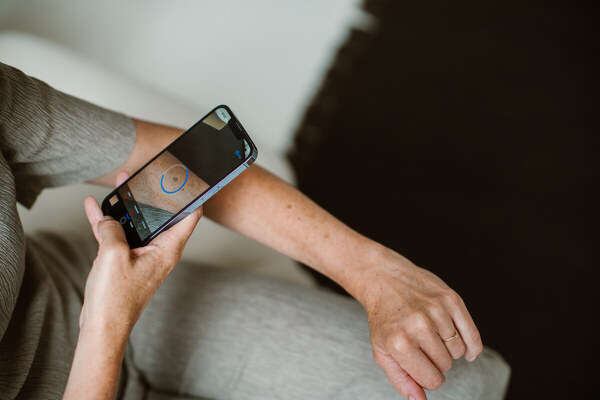Revolutionising wound care: digital solutions for better patient outcomes
Sponsored by Mölnlycke Health Care
At a time when healthcare systems around the world are wrestling with restricted budgets and ageing demographics is increasing the number of patients needing acute and chronic care, wound care is one aspect of medicine that is being pushed to the wayside.
Between 25 per cent and 50 per cent of hospital beds are occupied by patients with a wound, and one in five patients in European hospitals has a pressure ulcer, so an effective approach to the issue is crucial.
A landmark roundtable discussion at the Royal College of General Practitioners, convened by Mölnlycke Health Care, heard insights from a field of experts and leaders on how to capitalise on digital health solutions and innovations, heralding a transformative reduction of patient suffering and budget spend.
Adopting a new, digitally focused approach has the potential to revolutionise wound care in the face of a range of economic, structural and political barriers.
The contributors, from a diversity of UK health sector backgrounds, identified the opportunity to develop a paradigm shift in care by embracing technology and creating partnerships that drive rapid adoption and effective system recalibration.
The roundtable highlighted a clear pathway to better wound care provision through digital advances, connectivity and innovation combined with stakeholder collaboration (from patient through physician to procurement) and implementation excellence.
This expert-guided approach will be critical as a slew of research and data underscores the economic drain, care disruption and patient jeopardy of poor wound care. A real-world study published in the British Medical Journal reported that the annual NHS cost of wound management was £8.3 billion, of which £2.7 billion and £5.6 billion were associated with managing healed and unhealed wounds, respectively.
The imperative to bring expertise together, from both clinical and economic viewpoints, is evident. Several influences are in play, such as the advancing NHS carbon footprint target, which creates challenges but also presents drivers for healthcare to find new and more effective ways of delivering care.
Healthcare providers can realise the potential to improve care and meet sustainability targets by collaborating more with industry and the opportunities that flow from targeted digitalisation.
Digital tools are proving a key element in healthcare, with the potential to improve clinical performance and skill levels, drive sustainability and elevate staff satisfaction and mental health levels. A WHO study, published in The Lancet Digital Health, showed that HCPs using digital health reported increased accuracy and efficacy during decision-making and improved productivity.
“These findings are important because they reinforce our calls to governments and health authorities to promote and support the adoption of digital technologies among the health workforce,” said the study’s co-author, WHO Europe’s Director of Country Health Policies and Systems Dr Natasha Azzopardi-Muscat. “We are now seeing that, in addition to positive effects, digital tools can also improve the overall delivery of health services, which by extension means better healthcare for people.”
Generating a holistic view to both the barriers to change and the opportunities to improve wound care outcomes emerged as a key lesson that could be applied across all aspects of the healthcare system.
This can be empowered by greater collaboration between suppliers and providers as well as between procurement and clinicians within care settings. Partnerships forged early between industry and service providers will pave the way for innovative solutions to be adopted and implemented without friction so they can deliver improved patient outcomes.
It is expected that technology and AI will have a huge future across healthcare and in wound care, but the case for new products must be made on solid economic foundations and with an understanding that digital tools are there to enhance clinician’s performance, not replace it, in addition to driving better patient outcomes.
Crucially, the roundtable discussion revealed that this approach still needs finessing to allay fears and misinterpretations, from data privacy through cost effectiveness to job security, that exist across the patient-procurement-physician spectrum. It advocated an enhanced education and awareness outreach programme to reinforce the benefits through evidence-based submissions, while also welcoming feedback on where and why adoption faces resistance.
Focusing on preventative healthcare and prediction models can also improve clinical performance and reduce resource consumption, to meet exacting carbon footprint targets and drive efficiencies that will be valued by the market. But organisations need to be aware that distinct differences in digital potential exist between secondary/tertiary care and primary care, which have greater issues with time, resources and budgets.
How companies collaborate with all care sectors on the patient journey is a nuanced challenge that needs to be reflected in strategy, with a clear requirement for additional education and implementation support. Offering strong, evidence-based data tailored to patient needs early in engagements can be proactive and productive in clearing misconceptions and enabling an environment for change.
The implementation process is clearly critical to the success of new technologies as any innovation needs to synchronise not only with clinical requirements but also the workflow structures of a hospital or clinic and its budgetary responsibilities.
Insights from the roundtable showed that engaging with key stakeholders to understand their pressures, and how they influence service provision, is a fundamental step on the road to developing positive and productive relationships.
Among them could be outcomes-based trials where companies share the risk with hospitals or clinics to ease procurement bottlenecks and generate real-world data that leads to wider market access. A product of that approach would be patient-outcomes data on the impact of wounds on patients that can be fed into national dashboards. This would serve the dual purpose of underscoring the importance of wound care across healthcare and elevating that to a broader audience.
Producing high-quality, real-world data from digital applications that considers patient preferences and facilitates uptake can enrich small pilots with the necessary evidence that dismantles barriers to adoption. This helps prove positive patient outcomes and allows commissioners and procurement departments to have confidence in the benefit of innovative products.
There is a need for industry to show that it shares patient values with clinical staff, and that it can factor in the stresses and strains that are part of daily NHS life into product design and implementation. The aim is to work in partnership, to be co-creators and co-designers to drive the next generation of wound care.
This evolution of understanding and collaboration can be a gateway to greater adoption of digital tools, innovation and system design, leading to vastly improved patient outcomes while also protecting healthcare system budgets.
Healthcare systems are clearly under strain from an ageing patient cohort enduring multiple co-morbidities, and with that comes elevated levels of chronic wounds and ulcers. Reports have revealed that wound care health costs in Europe are expected to continue growing with increased impact on patients, clinicians and healthcare systems.
Change is possible, as the roundtable discussion concluded, but this needs collaboration, evidence-gathering and advocacy, and long-term commitment.
Further roundtables will be held in other countries to shine a light on the challenges and opportunities in the digitalisation of wound care in different health systems.

Business Reporter Team
Most Viewed
Winston House, 3rd Floor, Units 306-309, 2-4 Dollis Park, London, N3 1HF
23-29 Hendon Lane, London, N3 1RT
020 8349 4363
© 2025, Lyonsdown Limited. Business Reporter® is a registered trademark of Lyonsdown Ltd. VAT registration number: 830519543





